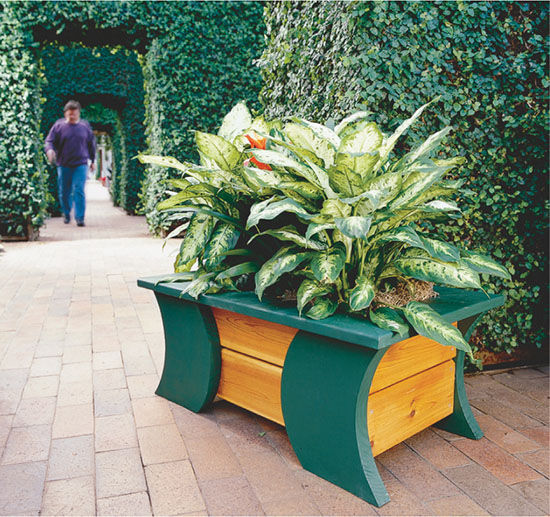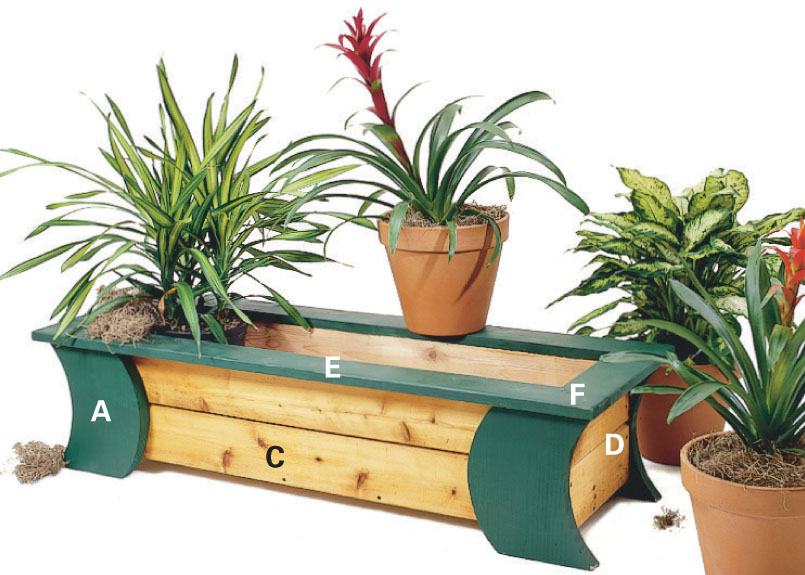

WHAT IT TAKES
TIME: 1 day
SKILL LEVEL: Intermediate

This planter is designed to make your patio or deck gardening much easier. Instead of filling it with dirt and planting each flower or plant individually, you simply set prepotted plants right into the planter. You can conveniently switch plants as the season changes or unload the planter and move it to a new location.
We designed this project to fit any pot with an 11-in. diameter or less and a maximum height of 10-1/2 in. To create the illusion of a fully planted box, you just fill in around the pots with wood chips, bark or other mulch covering. The base or bottom of the planter has 7/8-in. holes drilled every 6 in. to drain away any excess water. The side boards have a 1/4-in. space between them to ventilate the mulch and keep it from getting soggy.

You’ll notice the legs are treated pine and not cedar like the sides and top apron. Treated pine is less likely to split along the grain (a nasty problem with cedar). Pick treated 2x12 material for the legs with as few large knots as possible. You’ll be able to cut around knots on a single board, so bring a tape measure when you select the lumber. Choose straight cedar for the sides and remember that some knots here can add to the overall beauty.
Feel free to use other species of wood such as redwood, cypress or even a plantation-grown tropical wood like ipe (available at some lumberyards).
We chose an exterior enamel paint for the legs and apron pieces to accent the deck oil stain/sealer on the base and sides. Stain is a better choice than paint for the base and sides because they’ll be exposed to more moisture than the legs and top. The photo below shows the excellent results you can get by staining the entire project with an exterior oil deck stain.
We’ve shown you two planters of different lengths, but you can adapt them to fit your unique space. You can even change the width by nailing a treated 2x2 to the side of the 2x12 base piece to accommodate a slightly wider pot. To build either the small or large planter shown, follow our clear step-by-step photos and refer to the Cutting List for lumber lengths.
